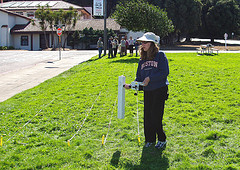While marine archaeology is primarily confined to the academic and scientific world, it can be argued that every diver who explores a wreck has an archaeological interest and responsibility. Both the seabed and numerous freshwater sites hold fascinating historical clues.
Rules for the Amateur
Although every dive has the potential to uncover historical artifacts, targeted methodical surveying is an entirely more serious endeavor, as is the appropriate way of excavating and recording any discoveries. Archaeological divers can thus be placed in one of two distinct categories – the serious professional diving archaeologist and the enthusiastic amateur.
While amateurs can make a valuable contribution to this field, it is crucial that they do so only through participation in an organized project, conducted by a recognized and authorized group. Many sites have been damaged, and artifacts removed, by what amounts to vandalism and theft – the equivalent on land would be digging up a historical site or burial ground without permission, which is, of course, unthinkable.
Numerous organizations welcome assistance from recreational volunteers and can supervise and guide them. The thrill of discovery truly reaches a new level when it is shared with people who understand the full significance of the find. You may find that more opportunities to join an organized project exist if you first undertake some training, possibly by volunteering on land-based digs.
Learning professional marine excavation and recovery techniques can be fascinating for the amateur. Archaeologists go to great lengths to avoid damaging a surveyed area, and even if they discover something of interest, refrain from intrusive collecting methods or digging.
What to Expect
Marine archaeological expeditions are initiated because research or local knowledge has pointed to an area with archaeological potential.
Modern GPS (Global Positioning System) technology has made pinpointing these sites much easier. Upon reaching the site, a detailed survey is typically first conducted.
This may involve using a datum line (a fixed reference line on the seabed from which measurements are taken) or pegging out a grid. Precise recording of the location and condition of the site before digging is essential and is usually accomplished through photography The value of photographic prints - Stephan R. Lewis is a professional photographer. He accepted to share his knowledge with us, with this exclusive article. The value of photographic prints I have been in the photo industry trenches for a long time and have watched many things come and go in popularity. When I say 'trenches' I mean not the glamour… or extensive sketching. Small test digs may occur before a full-scale excavation takes place, with the exact location of each discovery carefully logged, and the finds themselves sketched or photographed. Preservation and restoration techniques for these finds are highly specialized. Marine archaeology is far from the daring exploits of Indiana Jones, requiring discipline, attention to detail, excellent diving skills, and patience.
Manuel Marino is a seasoned Senior Producer, Music Composer, and Artist with over a decade of experience. He specializes in branded entertainment across various mediums, including video games, films, and advertising campaigns. With 20+ years as a game music composer, Manuel has worked on numerous platforms, creating diverse orchestral soundtracks. HIRE ME


 Manuel is a passionate, driven, and techsavvy AV technician,
Manuel is a passionate, driven, and techsavvy AV technician, 
